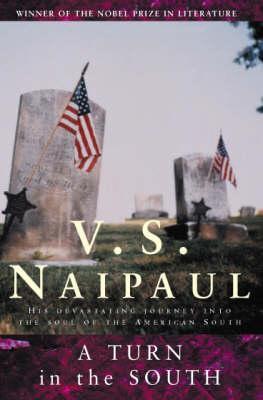What do you think?
Rate this book


200 pages, Paperback
First published January 1, 1989
I don't believe that our present society is one whose basic beliefs are religious, except in the South.- Flannery O'Connor, "Novelist and Believer"I did not feel that this book got off to a promising start. This was my first Naipaul and I wasn’t sure going in what to expect. It didn’t seem like a normal travel narrative, not that I read many of those, and I had the feeling that the observations in the book were meant to be meaningful just because they were being made by V. S. Naipaul, in 1990 a established and fairly famous writer, though not yet a Nobel laureate. Nor is it clear whether the people interviewed by Naipaul had any idea who he is, though presumably fellow writers like Anne Rivers Siddons and Eudora Welty would.
I’m not sure the religious part of the community is keeping up with the population growth. I’m not sure that the church membership is keeping up. But I realize that there are many Christians. I am encouraged by the short patience people had with the Gary Hart-Donna Rice situation. I am certainly encouraged aboput Christianity in this country and the work of the Lord.
The wealth – spent in the way it was known to have been spent: simplicity magnified, and then magnified again – was like wealth for everyone, for all the fat people of the people who – acting on a similar Presley-like principle of expenditure, but restricting it to what was available to them, the fast foods they found eternally tempting, luxurious and within easy reach, like a real-life version of manna or a modern version of something in a classical legend – had turned fulfillment and the glory of abundance to personal fat, fat as a personal possession.The visits to Elvis sites occurs at the beginning of Chapter 6, “Sanctities”, which mainly concerns Naipaul’s stay in Nashville. I found this chapter the best in the book, perhaps because it provides some relief from the unquestioned pieties and code-worded racism of the other chapters. Here we finally get to meet some religious discontents, thanks, surprisingly, to Reverend James Vandiver of the UCC. Henry, a college student who is wrestling with his faith, presents the “born again” experience as a socially conditioned element of Southern identity rather than as a divinely inspired spiritual awakening, an understanding which seems to surprise Naipaul. Melvin, an outright apostate, throws cold water on the idea of Christian fellowship within the church, an aspect many of Naipaul’s interlocutors praised unreservedly, calling revival meetings “the most boring, dull experiences you can have.”
Ever since the Charleston hotel (and especially after the busy business people of the hotel in Atlanta) I had been aware of very fat people, people who had risen (like dough) to special spheres of obesity. Not one or two; they were almost a class. Charleston was a resort town. They had appeared there, in the hotel, in gay holiday clothes that were on them doubly and trebly exaggerated; and they had, bizarrely, also appeared in couples. At one time there were at least four such couples in the hotel – gargantuan, corridor-blocking, and (no doubt the effect of numbers) not without aggression.
I had noticed them in other places after that. But it was Campbell who first spoke to me about the fatness of redneck women, and made it appear a regional or group characteristic. It was at times a pleasure and an excitement to see them, to see the individual way each human frame organized or arranged its excess poundage: a swag here, a bag there, a slab there, a roll there. A kind of suicide, it might have seemed, but I also began to wonder – in the Graceland ticket hall, among all those proud and excited folk – whether for these descendants of frontier people and pinelanders there wasn’t, in their fatness, some simple element of self-assertion.
The poor whites, many of them descendants of indentured servants, and to that extent sharing an ancestry of servitude with [Black people], were of no account in the South until the Civil War. Then, because they were needed to fight that war, they were evangelized and given their cause; and afterwards, as rednecks and Klansmen, still poor, still victims, they were held responsible and derided for what was really the racism of the entire society.More of that, please, and less of the sensationalizing bad faith choking much of the rest of this work.